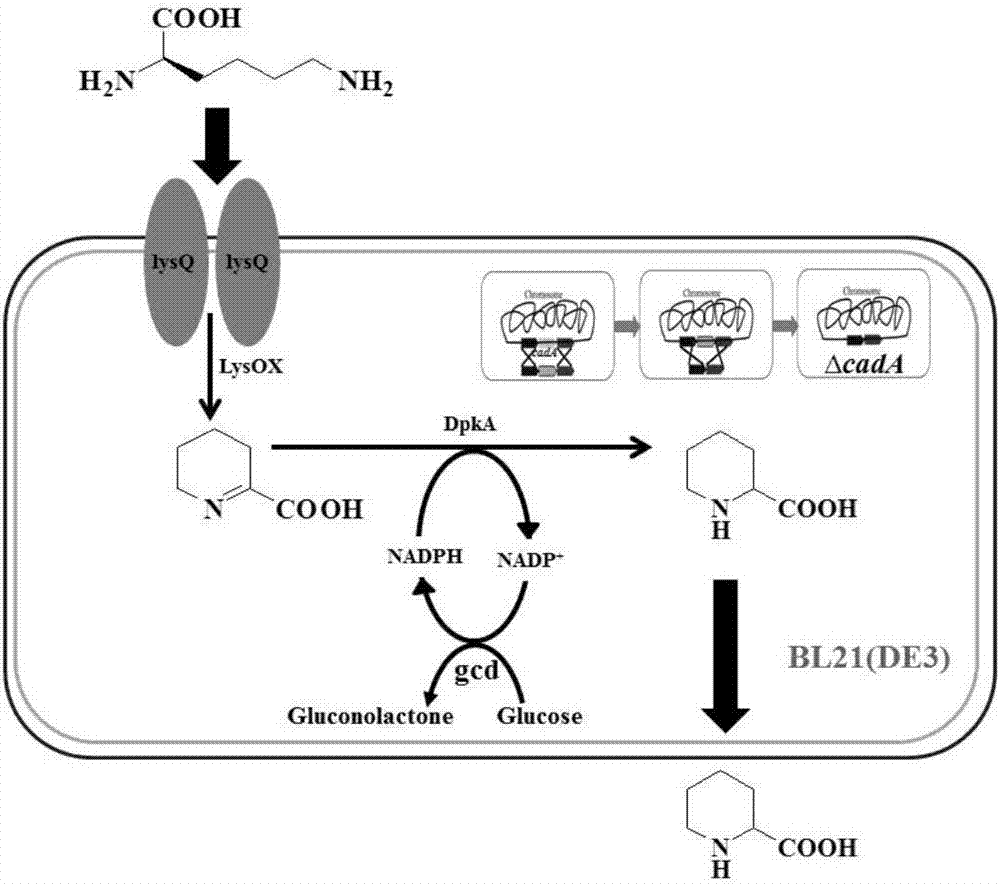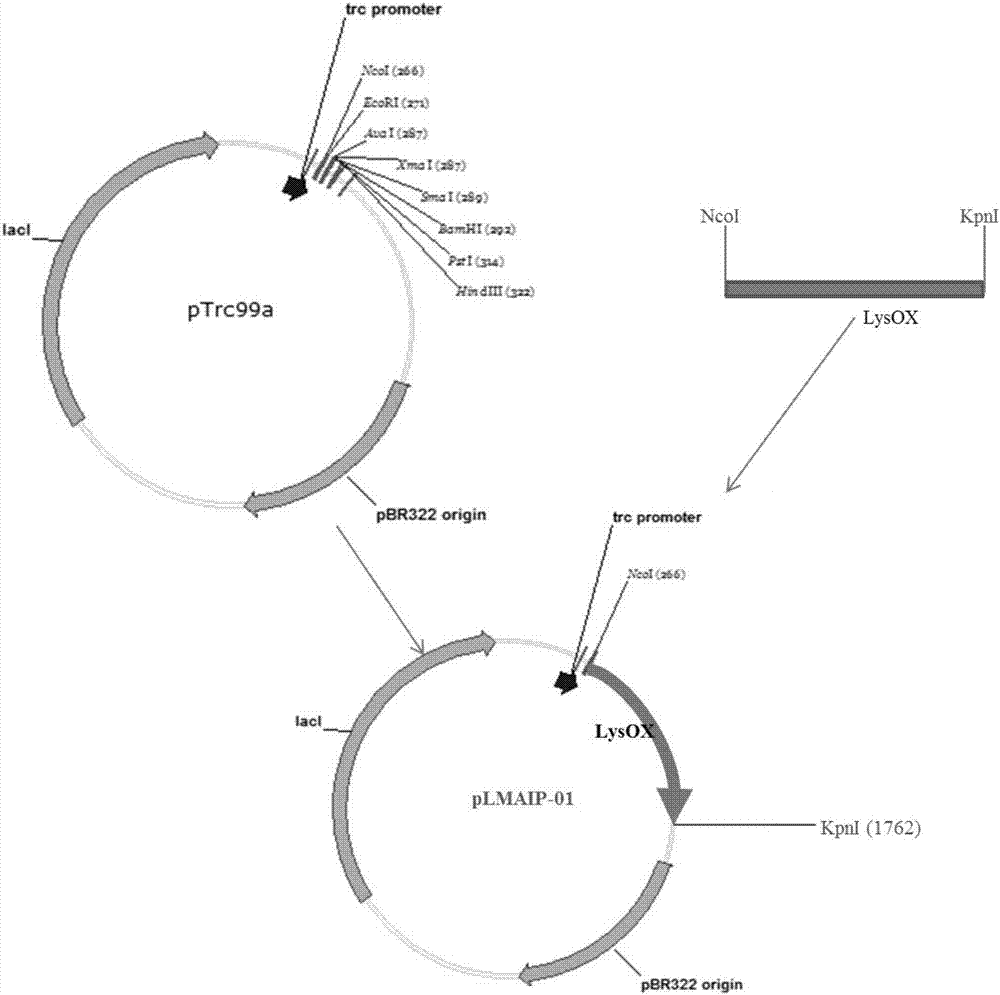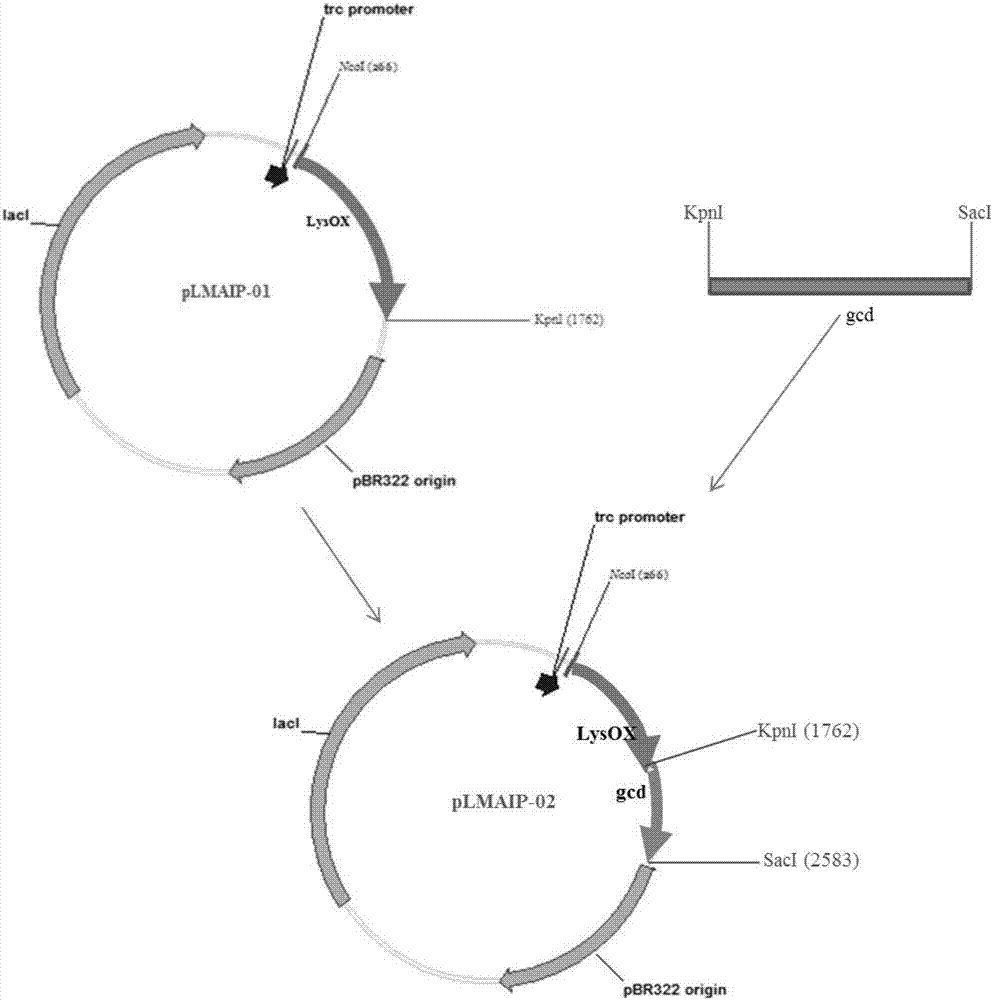Recombinant plasmid for producing pipecolinic acid, genetic engineering strain and method
A technology of genetically engineered bacteria and piperic acid, applied in the field of bioengineering, can solve the problem of no patent application, etc., and achieve the effect of high growth rate and high yield
- Summary
- Abstract
- Description
- Claims
- Application Information
AI Technical Summary
Problems solved by technology
Method used
Image
Examples
Embodiment Construction
[0044] For the purpose of the invention, the present invention provides the following technical solutions:
[0045] On the one hand, the present invention provides a kind of recombinant plasmid, and this recombinant plasmid is to carry L-lysine α oxidase gene (LysOX), and L-lysine is catalyzed by L-lysine α oxidase, is converted into Δ 1 - piperidine-2-carboxylic acid (Pip2C).
[0046] Preferably, the recombinant plasmid is a pLMAIP-01 vector carrying a complete coding sequence including the L-lysine alpha oxidase gene (LysOX).
[0047] On the other hand, the present invention provides a kind of recombinant plasmid, this recombinant plasmid is after the aforementioned recombinant plasmid pLMAIP-01 and PCR product glucose dehydrogenase gene (gcd) are cut with KpnI and SacI double-digestion, and gene is cleaved by T4DNA ligase The fragment was ligated with the vector fragment (pLMAIP-02).
[0048] Preferably, the recombinant plasmid is a pLMAIP-02 vector carrying complete codi...
PUM
 Login to View More
Login to View More Abstract
Description
Claims
Application Information
 Login to View More
Login to View More - R&D
- Intellectual Property
- Life Sciences
- Materials
- Tech Scout
- Unparalleled Data Quality
- Higher Quality Content
- 60% Fewer Hallucinations
Browse by: Latest US Patents, China's latest patents, Technical Efficacy Thesaurus, Application Domain, Technology Topic, Popular Technical Reports.
© 2025 PatSnap. All rights reserved.Legal|Privacy policy|Modern Slavery Act Transparency Statement|Sitemap|About US| Contact US: help@patsnap.com



